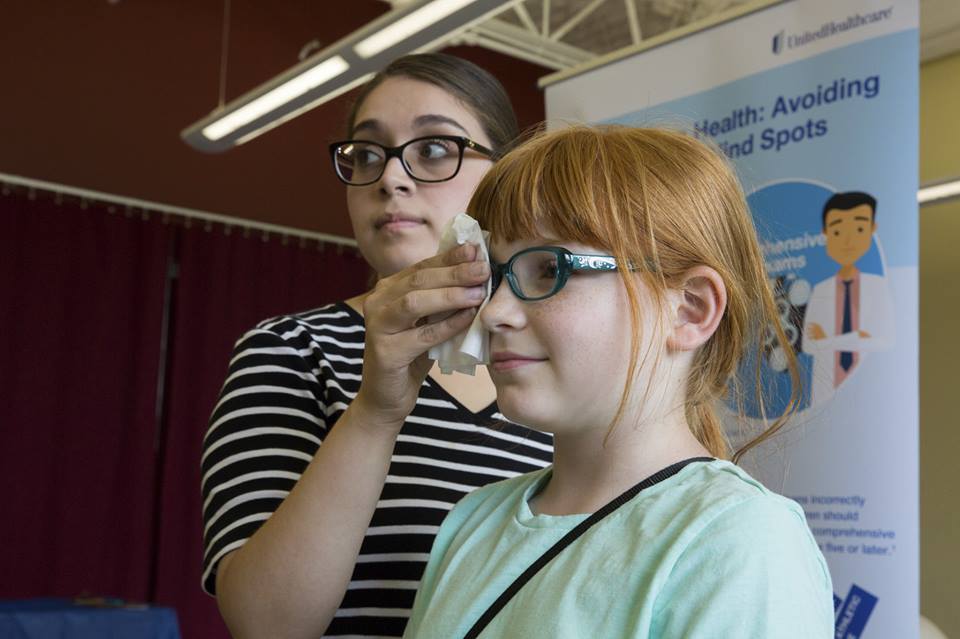Thousands of eye accidents happen each day; 90 percent of these are preventable with the use of appropriate safety eyewear.
Because there are good eye safety regulations in the workplace, the home is the source of the fastest-growing number of eye injuries. Eye injuries are almost as great a danger to bystanders as the people using dangerous tools or chemicals in the home. Good eye protection is just as important for those watching you work as for the workers themselves.
Find out more about preventing eye injuries at home, at work and at play.
This simple checklist will help you reduce the risks of home eye injuries for yourself and other family members.
Eye injuries in the workplace are very common. More than 2,000 people injure their eyes at work each day. About 1 in 10 injuries require one or more missed workdays to recover from. Of the total amount of work-related injuries, 10-20 % will cause temporary or permanent vision loss.
Experts believe that the right eye protection could have lessened the severity or even prevented 90% of eye injuries in accidents.
What are the Common Causes of Workplace Eye Injuries?
Common causes for eye injuries are:
- Flying objects (bits of metal, glass)
- Tools
- Particles
- Chemicals
- Harmful radiation
- Any combination of these or other hazards
What is my Best Defense Against an Eye Injury?
There are three things you can do to help prevent an eye injury:
- Know the eye safety dangers at work-complete an eye hazard assessment
- Eliminate hazards before starting work. Use machine guarding, work screens, or other engineering controls)v
- Use proper eye protection.
When Should I Protect My Eyes at Work?
You should wear safety eyewear whenever there is a chance of eye injury. Anyone working in or passing through areas that pose eye hazards should wear protective eyewear.
What Type of Safety Eyewear is Available to Me?
Safety eyewear protection includes:
- Non-prescription and prescription safety glasses
- Goggles
- Face shields
- Welding helmets
- Full-face respirators
What Type of Safety Eye Protection Should I Wear?
The type of safety eye protection you should wear depends on the hazards in your workplace. If you are working in an area that has particles, flying objects, or dust, you must at least wear safety glasses with side protection (side shields). If you are working with chemicals, you should wear goggles. If you are working near hazardous radiation (welding, lasers, or fiber optics) you must use special-purpose safety glasses, goggles, face shields, or helmets designed for that task.
What is The Difference Between Glass, Plastic, and Polycarbonate Lenses?
All three types of safety lenses meet or exceed the requirements for protecting your eyes.
Glass lenses
- Are not easily scratched
- Can be used around harsh chemicals
- Can be made in your corrective prescription
- Are sometimes heavy and uncomfortable
Plastic lenses
- Are lighter weight
- Protect against welding splatter
- Are not likely to fog
- Are not as scratch-resistant as glass
Polycarbonate lenses
- Are lightweight
- Protect against welding splatter
- Are not likely to fog
- Are stronger than glass and plastic
- Are more impact resistant than glass or plastic
- Are not as scratch resistant as glass
Ten Ways to Prevent Eye Injuries at Work
Nearly one million Americans have lost some degree of their sight due to an eye injury. More than 700,000 Americans injure their eyes at work each year. Luckily, 90% of all workplace eye injuries can be avoided by using proper safety eyewear.
More than 25,000 people seek treatment for sports-related eye injuries each year. The good news is that almost all of these injuries can be prevented. Whatever your game, whatever your age, you need to protect your eyes!
First Aid for Eye Emergencies
Knowing what to do in the event of an eye injury can save valuable time and possibly prevent vision loss. Here are some instructions for basic eye injury first aid.
How to Jump Start a Car Battery Safely
Everyone with a car needs to know how to safely jump-start their car battery. You can prevent serious injury to your eyes by following this simple safety checklist.
Fireworks Safety
Prevent Blindness warns that there is no safe way for nonprofessionals to use fireworks. It is only safe to enjoy the splendor and excitement of fireworks at a professional display.
Children’s Eye Safety
Accidents involving common household products cause 125,000 eye injuries each year. Every 13 minutes, an emergency room treats a sports-related eye injury. And, 43 percent of sports-related eye injuries are to children ages 14 and younger.
The good news is that ninety percent of these eye injures can be prevented through understanding, safety practices and the use of proper eye protection.
Eye Safety for Hurricane Preparation and Storm Damage Cleanup
Prevent Blindness urges everyone living in coastal communities to think about eye safety when preparing for a storm or when cleaning up after storm damage.
